Microsoft
Robotic Air Hockey
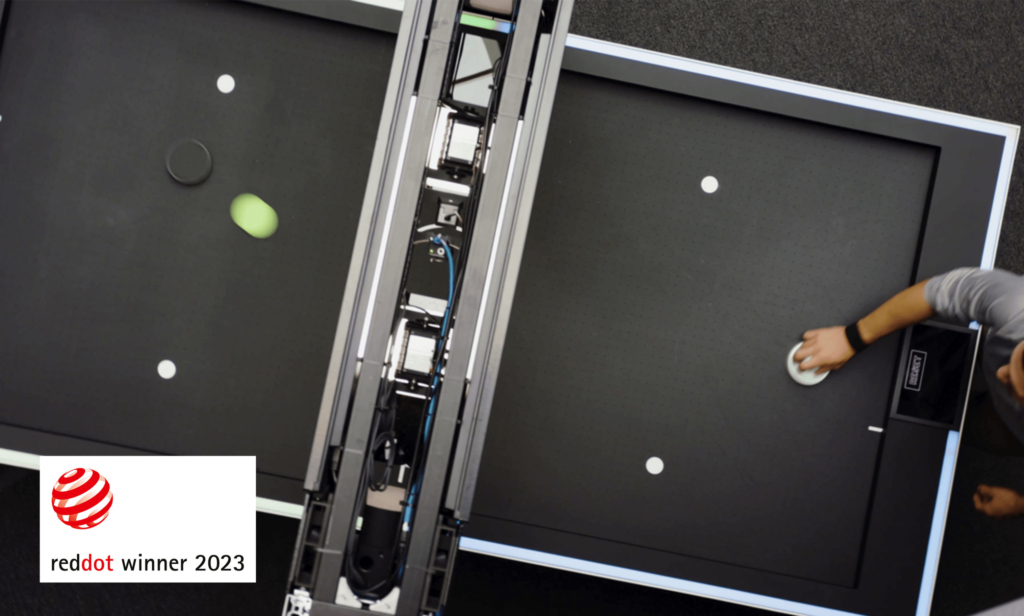
Reimagining air hockey through artificial intelligence
Background
Microsoft AI partnered with us to develop a promotional hardware piece for the Autonomous Systems group. They needed a bold platform to deploy, test, and interact with AI models created with Project Bonsai. Together we created a first-of-its-kind robotic air hockey table that gamifies interaction with intelligent control systems. Our team of designers, developers, and engineers worked holistically to deliver Microsoft a prototype that materializes traditionally simulated AI development efforts into tangible experiences accessible to anyone.
Challenges
- Modernizing the 50-year-old game of air hockey while maintaining the essence and tradition of the classic version
- Integrating multiple systems, including visual displays, AI, computer vision, gantries, and magnetic controls, into a seamless, market-ready end product
- Pairing complex form and function––the physical product and the underlying AI that automates the opponent––while never interrupting the player experience
Core Technologies

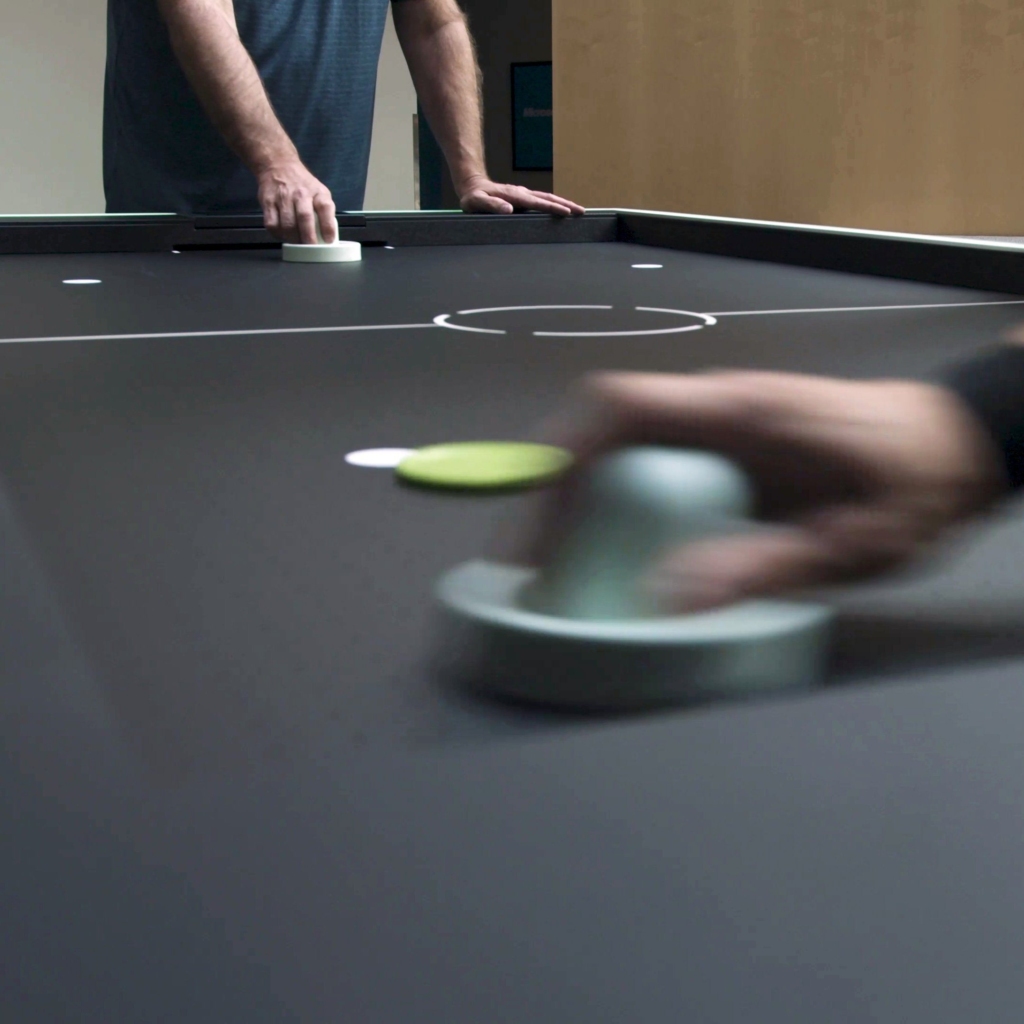
Modernizing the retro experience
With classic air hockey at its heart, we embedded the latest systems and autonomous technologies without affecting the original two-player experience. From the moment you approach the table, each touchpoint is re-envisioned to bring air hockey into the 21st century.
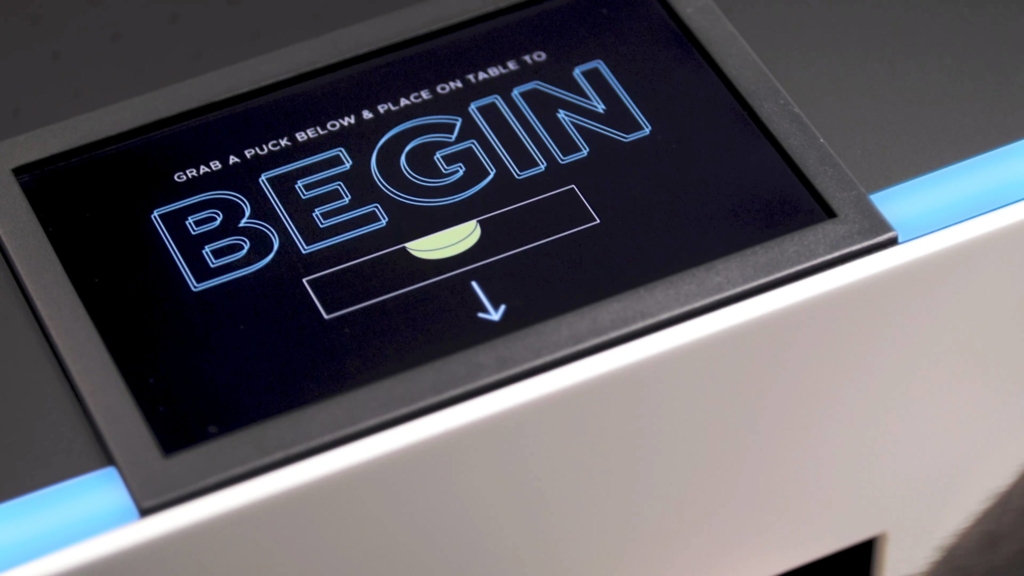

Immersive effects from multiple systems
The traditional coin slot and 8-segment scoreboards have turned into touchscreen control panels and ultrawide high-definition displays. A user experiences reactive lighting, custom animations, and sound effects from a Bose speaker system during gameplay.
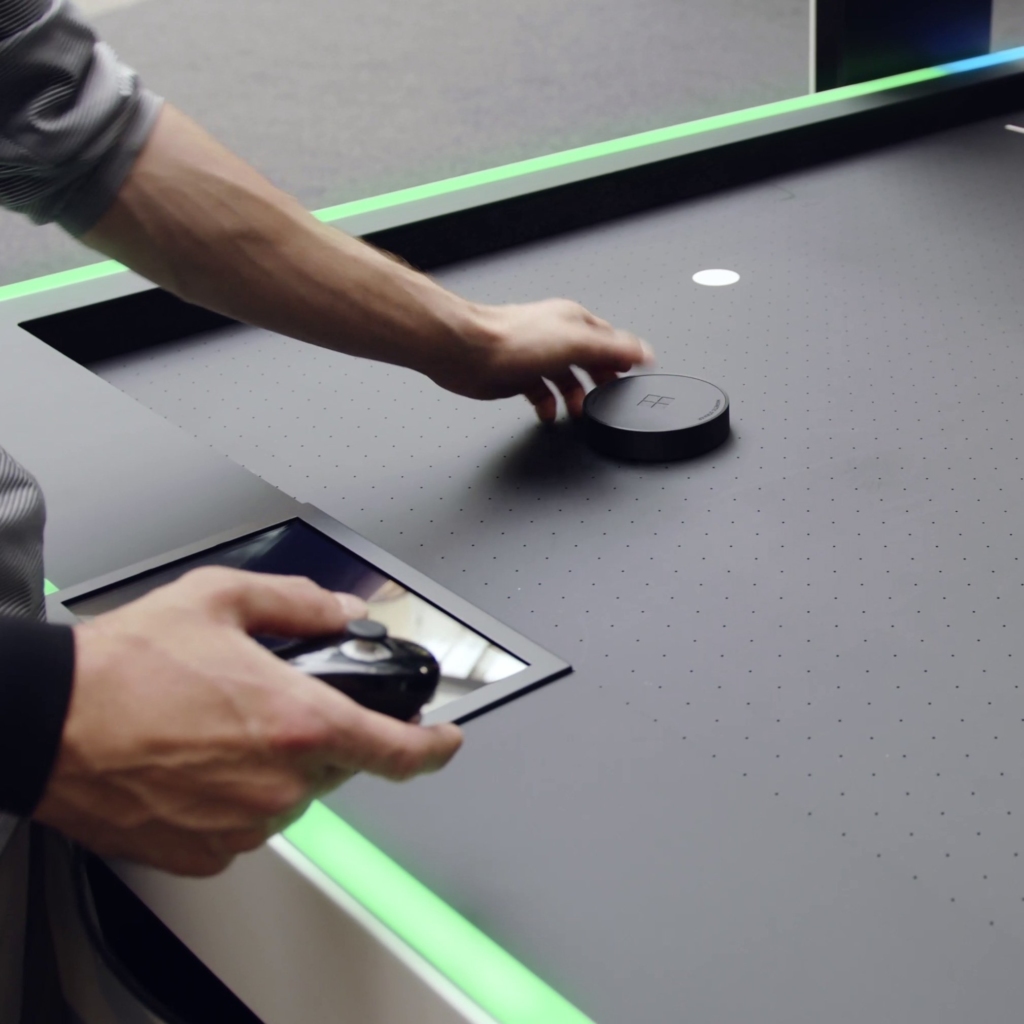
Envisioning the invisible opponent
The robotics were adapted to the game, not the other way around. An X-Y gantry system, mounted below the playing surface, magnetically couples to a custom-designed striker. This magnetic connection introduces an element of magic with seamless switching between robotic and standard two-player games.
We added a controller port so you can take over the gantry and play as the robot, enabling gameplay for those with limited mobility and a new challenge for air hockey veterans.
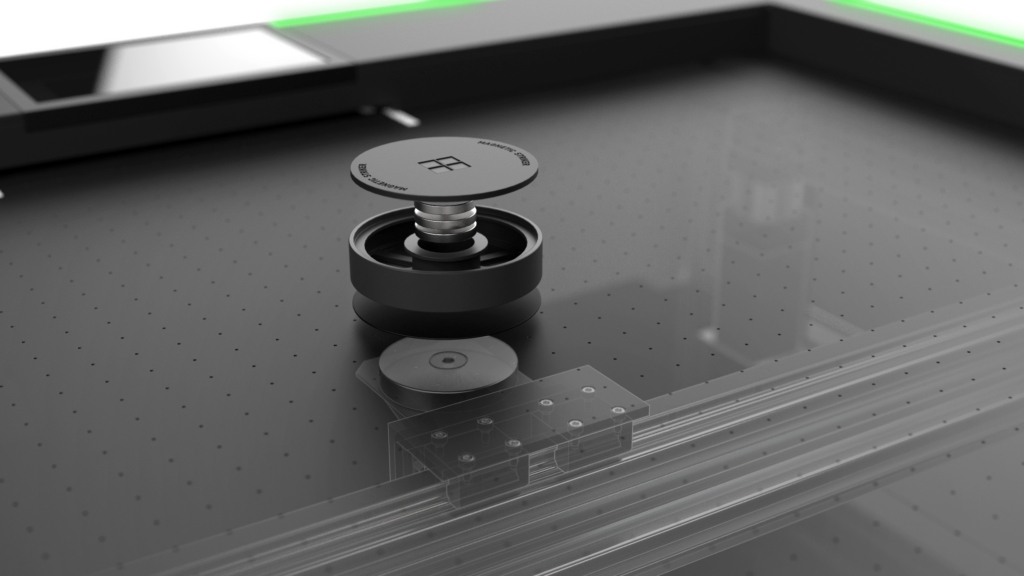

Transparency into autonomous systems
Microsoft AI is the premier partner in autonomous technologies, and they set standards around honesty and AI for good. This theme is captured with transparency in the design: built-in viewports and illumination let you see the internal mechanics and understand how the robot operates.
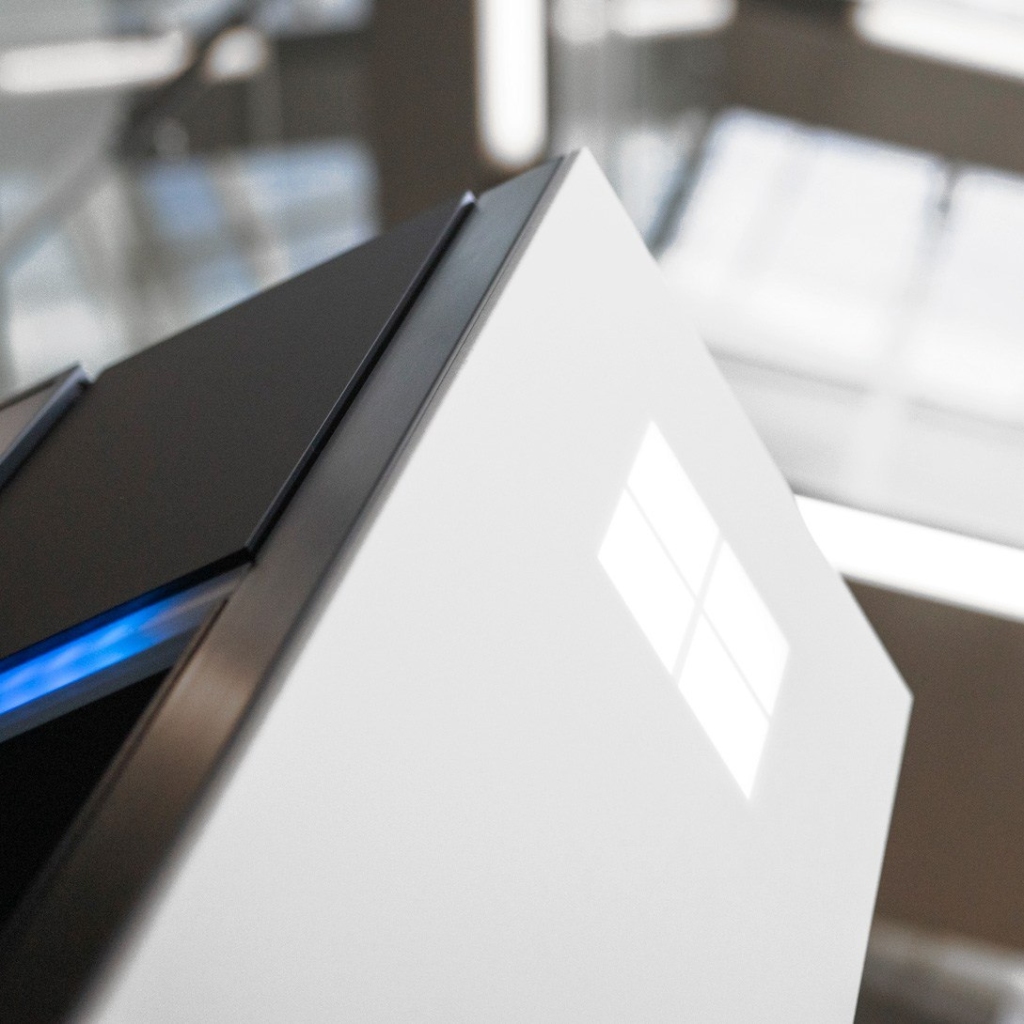
Integrating with an established aesthetic
The Autonomous Systems group was beginning their entry into the experiential hardware space. With intent to debut at Microsoft stores and events, the robot had to coexist in this environment with other Microsoft product families.
We followed a high contrast, orthogonal design language blended with subtle references to the retro arcade space.
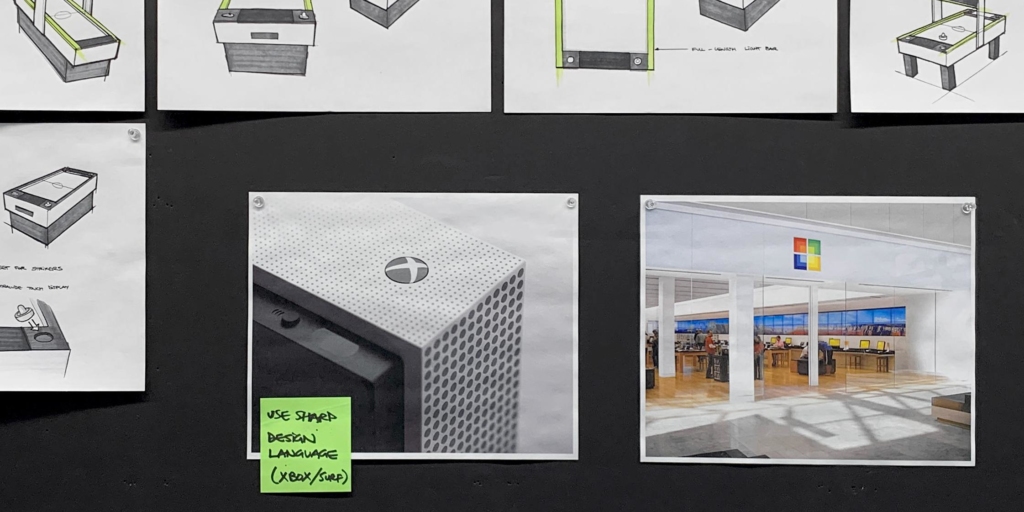
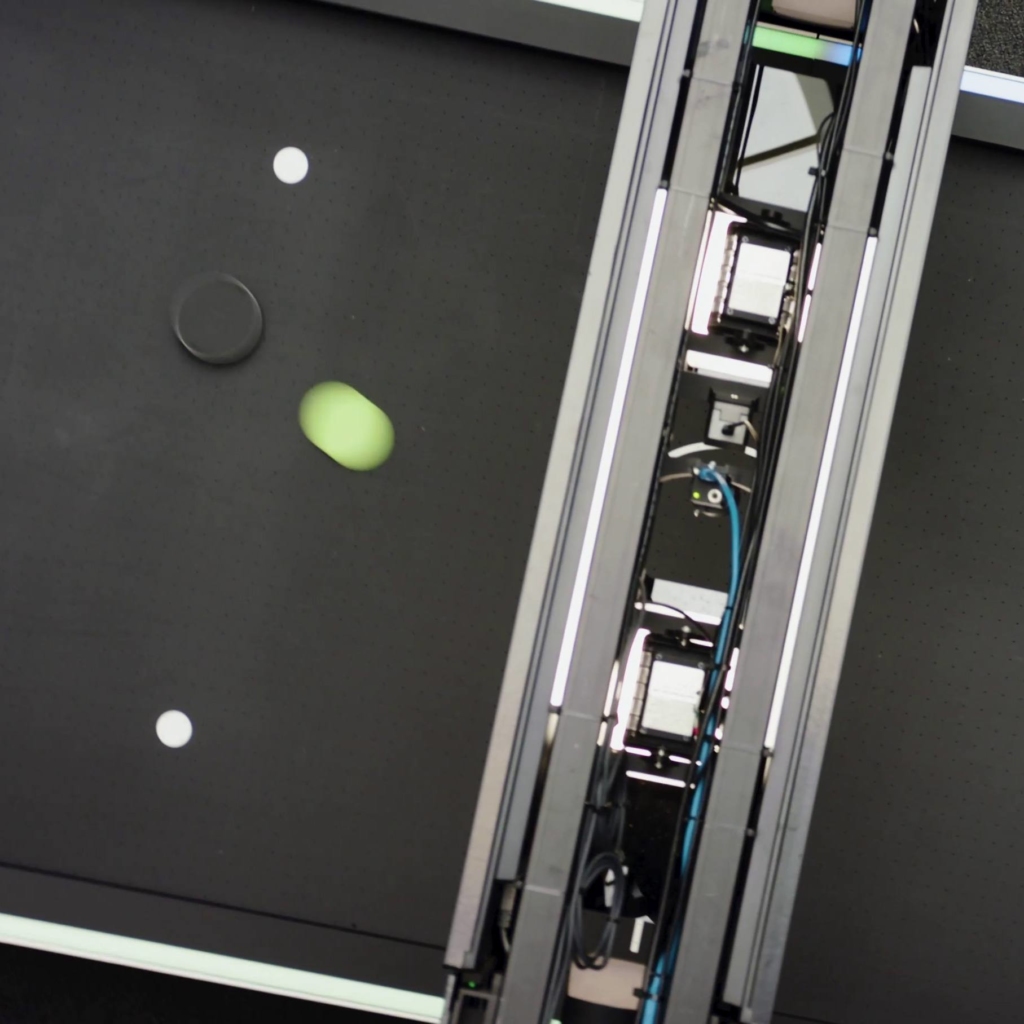
Giving sight to AI
The robot uses a high-speed camera to track the puck and auxiliary webcams that capture game play for social media streaming. The vision system auto-calibrates to new lighting environments using strategically placed tabletop graphics and a white balance tool built into the existing paneling.
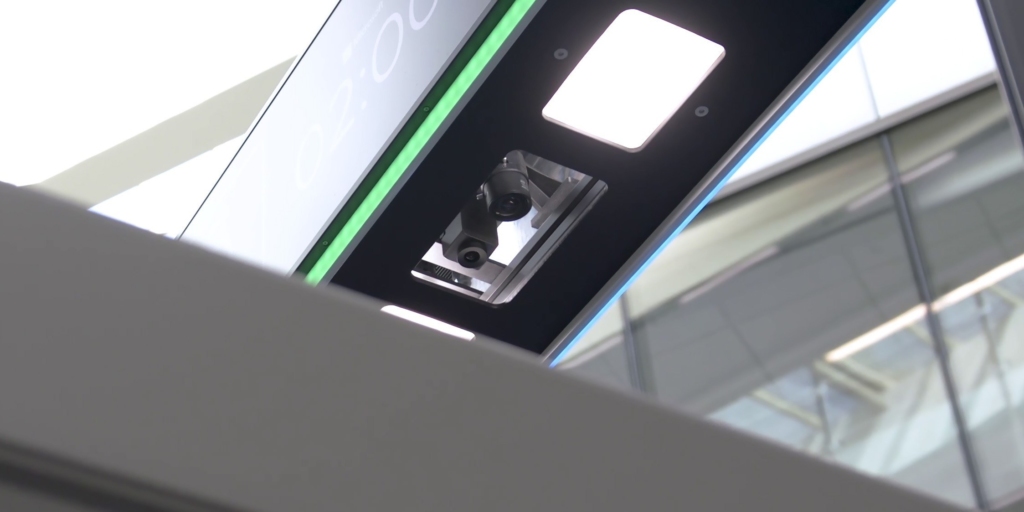
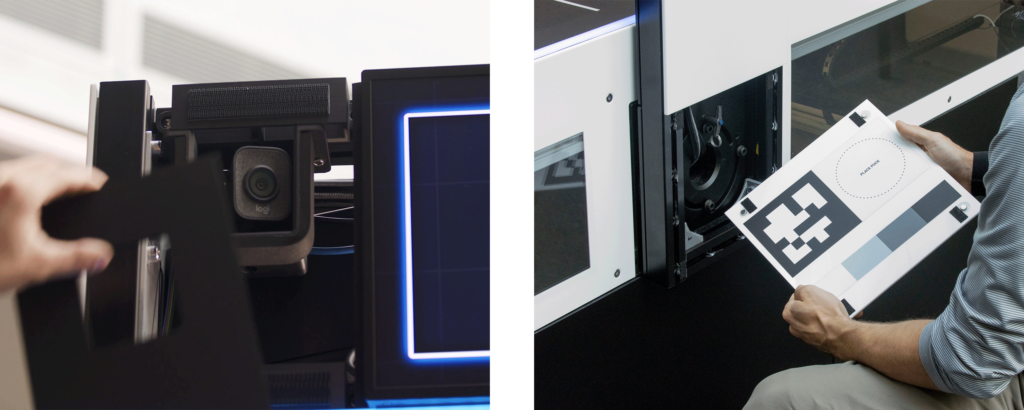
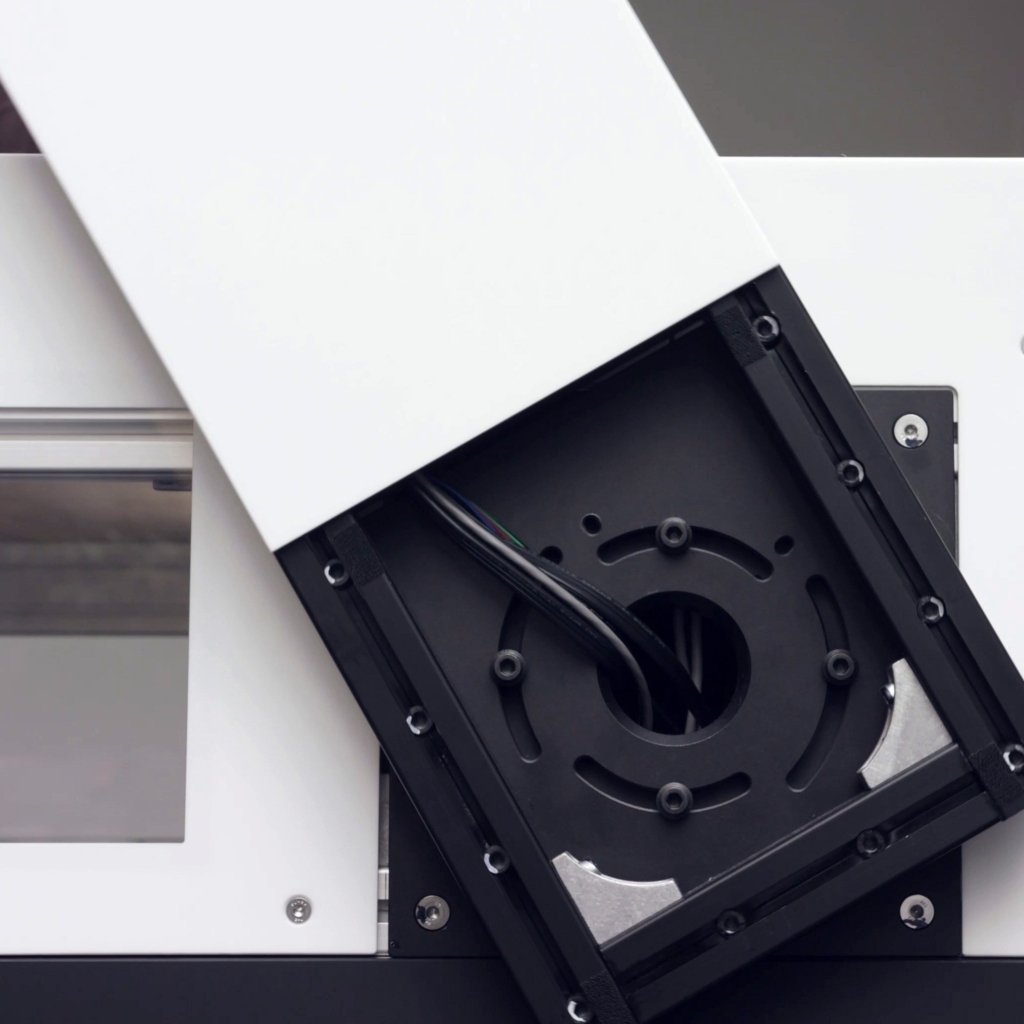
Engineering an experiential prototype
The structure is primarily aluminum framing with custom fixtures for mounting the power, lighting, vision, and computing systems. We engineered some specialized components to help with transport and accessibility, including a locking hinge that lowers the entire electronics upright and access panels revealing the computing systems.




















